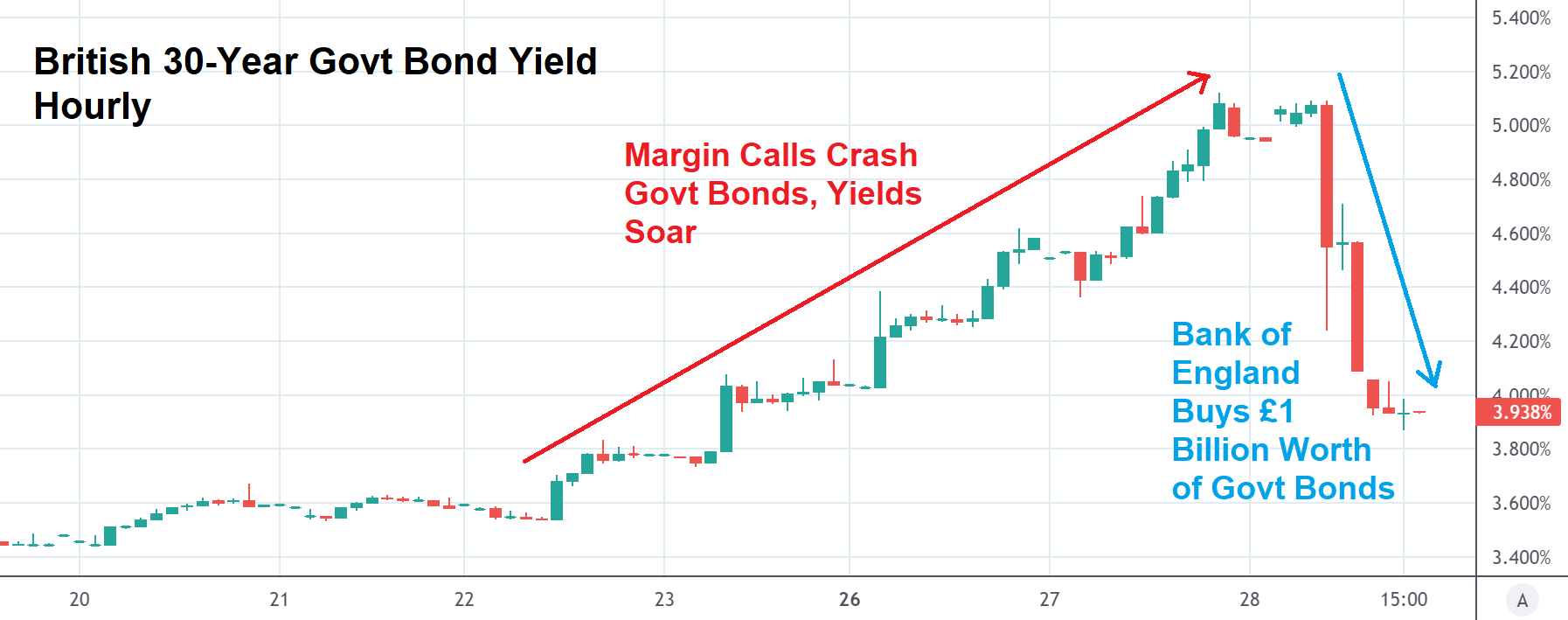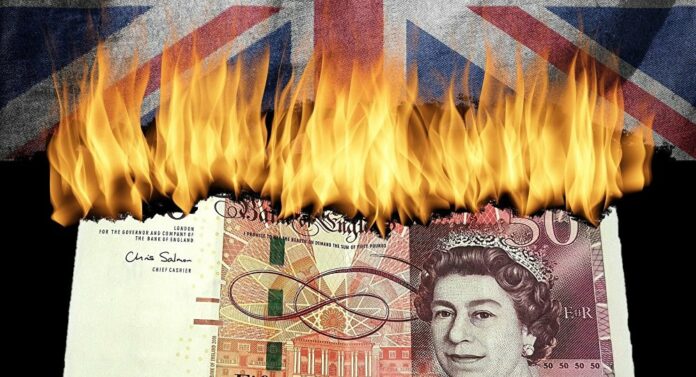Yields down, stocks up. The market rallied strongly this morning in response to plunging yields, and not just from US Treasury yields, either. The 10-year Treasury rate did head lower today (down to 3.78% from almost 4% yesterday), but British government bonds undoubtedly stole the show.
The Bank of England (BoE) started buying bonds again today after a crashing pound slammed Britain’s financial structure like a sledgehammer over the weekend. The pound’s sudden weakness, which was driven by a disastrous mini-budget release from UK chancellor Kwarteng last Friday, caused thousands of pension funds to face margin calls due to their exposure to liability-driven investment (LDI) funds (on the advice of mega-money managers like BlackRock).
These LDIs were intended to protect pensioners from interest rate and inflation risk. Instead, they subjected pensions to swift margin calls that prompted intense UK government bond selling, sparking a “death spiral” for bonds as yields soared opposite the tumbling pound, provoking additional margin calls.

The BoE bought over £1 billion worth of UK bonds today to end the death spiral. Additional purchases are expected, thus killing any attempts at quantitative tightening (QT). The UK is now entering another period of quantitative easing (QE) as a result, which should eventually pull the pound lower as QE is inflationary, causing additional margin calls.
In short, today’s BoE rescue was a bailout for the horrible decision from hedge funds to have pensions trading on margin. The BoE says it’s a temporary measure.
News flash: the bond purchases will continue indefinitely from here.
The BoE became the first central bank to “blink” today in the face of financial turmoil, and that was even before it could start QT. The Fed began QT back in June, but if the global financial structure continues on its current path, it may only be a matter of time before the Fed follows the BoE and resumes QE, too.
That had investors excited this morning even though it paves the way for hyperinflation in 2023.
“We’ve gone from QE to QT back to QE,” said AmeriVet Securities’ Greg Faranello.
“When rates move like this – very, very quickly, – liquidity comes into question. It means collateral, it means margins, it means the potential for further dislocation […] It tells you there’s a problem with the plumbing. There’s a problem under the hood.”
Faranello continued:
“We’re taking froth off of Fed rate increases moving forward. It doesn’t mean they’re going to stop. It doesn’t mean they’re going to blink,” he said.
“Maybe the Fed doesn’t stop, but they take a more measured approach.”
That “problem” may be just what bulls have been asking for, though, with September (a weak month, seasonally) coming to a close and October (a typically bullish month) approaching.
We’ve mentioned in the past that the market is in “bad news is good news” mode when it comes to economic data (outside of inflation), as it suggests the Fed will ease off its rate hikes.
That’s still the narrative driving stocks, but if the Fed commences with a QE reboot, the result will be a net negative for long-term investors. Yes, stocks will rise, but so too will inflation.
The market’s unlikely to outpace inflation if central banks throw in the towel. That means real returns will be negative, which is, of course, very bad.
But that might be where stocks are headed. The BoE got the party started this morning. Now, investors are waiting for the Fed to make its move.
If it does, look out above.









